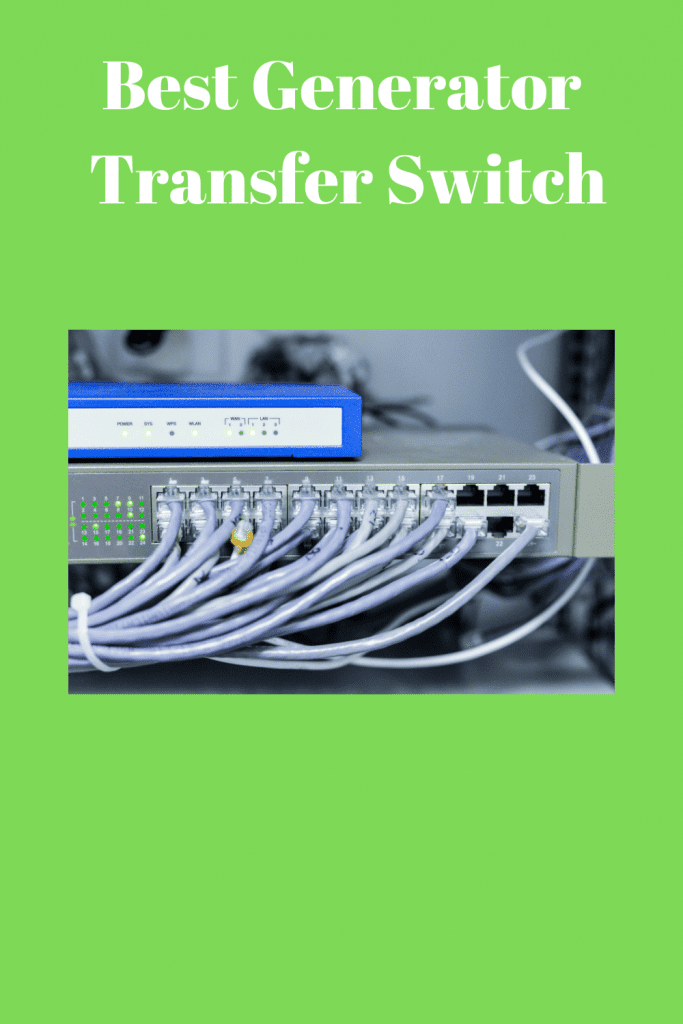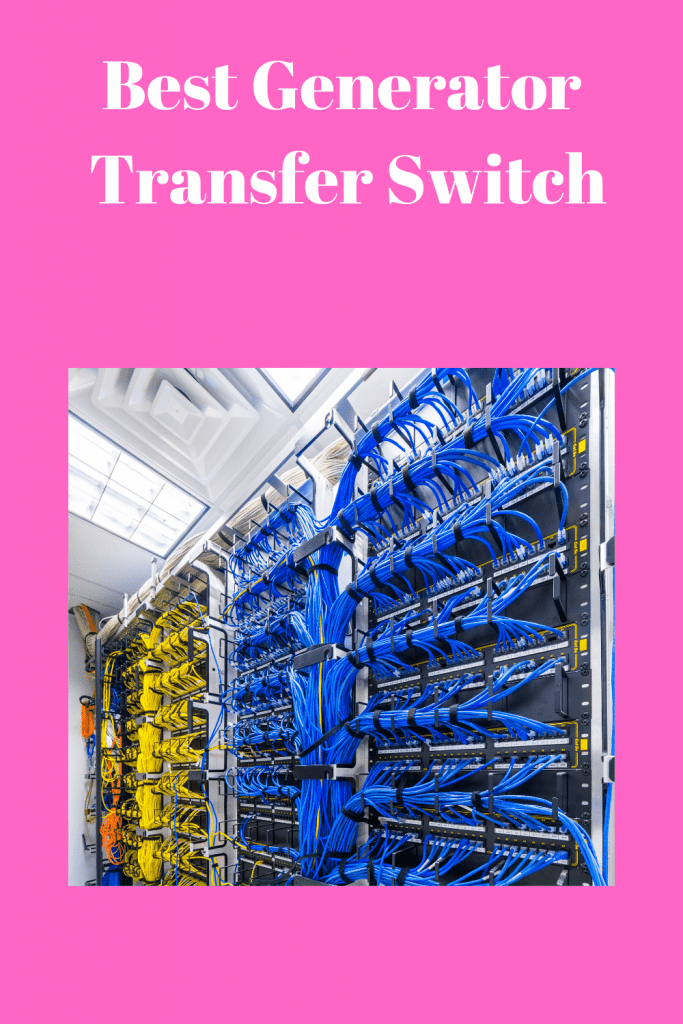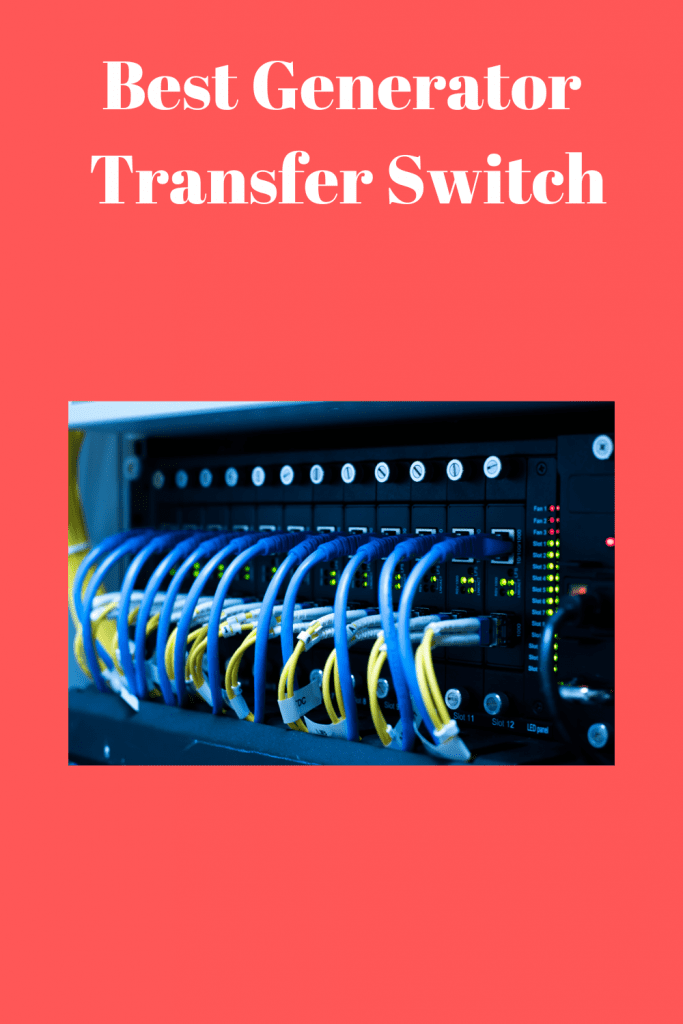Generator Transfer Switch Overview
A portable generator transfer switch will allow you to have power to selected circuits in the event of a power outage.
You’ll simply need to plug in your portable generator and crank it up, and then everything in the new circuit box or portable generator transfer switch will be running. For anyone used to working with electricity, this isn’t a complex task.

However, novices should get experienced help before attempting to install a portable generator transfer switch.
Manual Transfer Switches
The Manual Transfer Switch allows the owner to start up a generator and restore power to pre-designated, critical circuits when utility power is not available. Check out the best generator deals here
Suitable for residential and light commercial applications, they are a simple way to provide owners with a high level of safety and comfort.
Automatic Transfer Switches
A standby generator is basically brain dead without an automatic transfer switch.
They are similar to the thermostat in your house. Instead of monitoring temperature, an automatic transfer switch monitors utility power.
When the power goes out, the whole house automatic transfer switch tells the generator to start.
Advantages of Generator Automatic Transfer Switches
When the electricity goes out in your home, you can usually withstand a few hours of darkness, heat, or cold until it returns.
But when your business experiences a power outage, it could prove tragic, especially if its critical functions depend on a constant power supply.
This very scenario is why many entities, including hospitals, data centers, and even commercial retailers, have emergency backup generators.
But simply having a backup generator doesn’t mean that you’re prepared for a power outage.
To be prepared, you need to ensure that your generator is accessed via an automatic transfer switch or outdoor generator transfer switch and not a manual one.
Reliance Transfer Switch can also be of great value here
How Does an Automatic Transfer Switch Differ From a Manual One?
Manual transfer switches predate automatic switches, but they are still used widely today.
Unlike automatic switches, manual switches require one to switch from grid power to generator power in the event of a power outage and then back to grid power when it resumes.
In automatic switches, special circuitry allows this process to be controlled by a computer.
In facilities that have a single, conveniently located generator and don’t require constant power, the difference between manual and automatic switches is negligible.
But for companies that occupy a campus setting and have more than one generator to service numerous buildings, automatic switches offer the most convenience.
When you choose automatic switches over manual ones, you have another decision to make: do you need “make before break” switches or “break before make” switches?
The former immediately connects a building to generator power as it remains on grid power, while the latter waits to access generator power until it reaches a certain frequency.
As one might expect, make before break models are favored by entities that need power at all times.
But they do come with a risk: if grid power suddenly returns while generator power is also accessed, a power surge could occur.
However, because the period where both sources are accessed is brief, the danger is considered minimal.
If you are considering protecting your business with an emergency generator, understand that generators benefit more than companies whose critical services require constant power.
Generators can also benefit retail outlets, fitness clubs, service centers, and any operation where sales depend on maintaining a powered environment.
Before you buy a generator, it’s best to consult with a provider of emergency power equipment to determine which type of switch arrangement is best for your business.
Power outages can happen at any time. By equipping your business with generator power, you’ll do more than keep the lights on.
You’ll also conduct business as usual while the competition remains in the dark.

Generator transfer switch installation
Step 1 – Size of Generator
Before installing a portable generator transfer switch, you need to know what size of generator to buy.
How much do you really need to run during a power outage?
Look at the wattage of the appliances and buy a generator that allows for a comfortable margin above this to accommodate spikes.
Step 2 – New Panel
Shut off power to the main breaker box and take off the cover.
Remember that the main disconnect terminal will still be hot, so avoid approaching it.
You’ll see a circle on the side of the box. Knock this out and put in a threaded nipple.
At the other end of the nipple, attach the new box.
Use heavy screws to anchor the new box to the wall. Now attach the grounding bus to the wall of the new panel.
Step 3 – Wiring
You need to remove the black wire from each of the breakers which have a circuit you want to power with the generator.
Use an insulated screwdriver for this. After this, remove the breaker from the panel and remove the white and green wires.
Tape all three wires for each circuit together.
Strip the sheathing from the 10/4 cable and feed it through the conduit between the two boxes.
Connect the white and green wires to the appropriate buses in the main panel.
Now attach the red and black wires from the 10/4 cable to a breaker that’s 30 am and 240 volts and press it into place in the main panel.
Repeat the connections in the transfer panel switch panel.
Once you have the hot wires connected to a breaker and installed, you have power to the side panel.
Step 4 – Circuits
You’ll need to extend the wires from the circuits you’ve disconnected to bring them into the portable generator transfer switch panel.
Depending upon the local code, you might be able to use wire connectors for this purpose.
Having done this, bring the wires through the conduit.
Attach the white wire to the neutral bus, the green wire to the ground bus, and the black wire to the breaker.
Step 5 – Outlet
To set up an outlet for the portable generator to plug into within the power generator transfer switch, you’ll need more 10/4 cables.
Connect to the receptacle for the generator. In the breaker box, attach the white and green wires to their respective buses and attach the black wire to a free 240-volt breaker.
Required Installation Materials
Careful research is necessary before reaching for the least expensive solar kit.
Some kits on the market come with everything a homeowner needs for installation, including an inverter, array wires, and mounting brackets.
However, many kits require homeowners to purchase installation materials at an additional expense, significantly increasing the total cost of the kit.
Output-Wattage
As the wattage or output of the solar kit increases, so does the price.
Homeowners should determine the amount of output they need or expect from their system before beginning the shopping process.
Knowing the output requirements of the kit allows homeowners to focus on and comparison shop only for systems that will meet their needs.
Ease of Installation
Homeowners should look for solar kits that are easy to install.
View the kit’s instructions before making a purchase and ensure that the instructions are easy to follow and understand.
Look for manufacturers that provide live installation support via telephone or the internet.
Additionally, some solar kits are equipped with panels that have their own inverter installed directly on the panel.
This feature allows homeowners to bypass the process of purchasing a separate inverter to convert DC power to AC power commonly used by the electric grid, appliances, and electronics.
Although more expensive, these solar kits significantly reduce the time and effort required for a successful installation.

Generator transfer switch installation costs
The transfer switch installation itself is only $150-200 typically (not including switch/materials cost), but that is a small part of the issue because you have to consider generator installation cost, auto-switching if that is what you are looking for, load division if the generator is not rated for the full-house load (very few are), circuit protection, etc.
If you look in the Home > Electrical link right under your question, you will find several related recent questions and answers for projects ranging from a straight whole-house generator and transfer switch to selective circuit switching.
Once the transfer switch is installed, the system works like this:
When the electricity goes out, you set up a portable generator outside and plug it into the power inlet box.
If the inlet box cable runs to a junction box with a power cord, plug the power cord into the transfer switch.
Be sure all the toggle switches on the transfer switch are in the off position. Then go outside and start the generator.
(Caution: Gas-powered generators exhaust deadly carbon monoxide fumes. Never run a generator indoors, near an open window or door, or in an enclosed area, such as a garage or carport.)
Now that the generator is running, you can pick and choose which appliances and electrical circuits to electrify by simply flipping up the switches on the transfer switch.
Note that in most cases, the transfer switch will be connected to more circuits than the generator can accommodate all at once, so keep track of which circuits are on and be careful not to overload the system.
Read the owner’s manual that comes with the transfer switch. You’ll find detailed instructions on the proper operating procedure.
Transfer switches come in various sizes to match common-size generators.
The two most popular residential transfer switches are the six-circuit switch ($250 to $300), which is designed for use with a 5000-watt generator ($600 to $750), and the 10-circuit switch ($350 to $400), which can accommodate a 7500-watt generator ($850 to $1,000).
Hire an experienced, licensed electrician to install the transfer switch, which will cost an additional $200 to $400, depending on the size and complexity of the installation.
The total cost of installing a transfer switch is significant, but it’ll be well worth the investment the next time the power goes out, and you’re not left sitting in the dark. The cost might be varied. Check best generator switch here.
